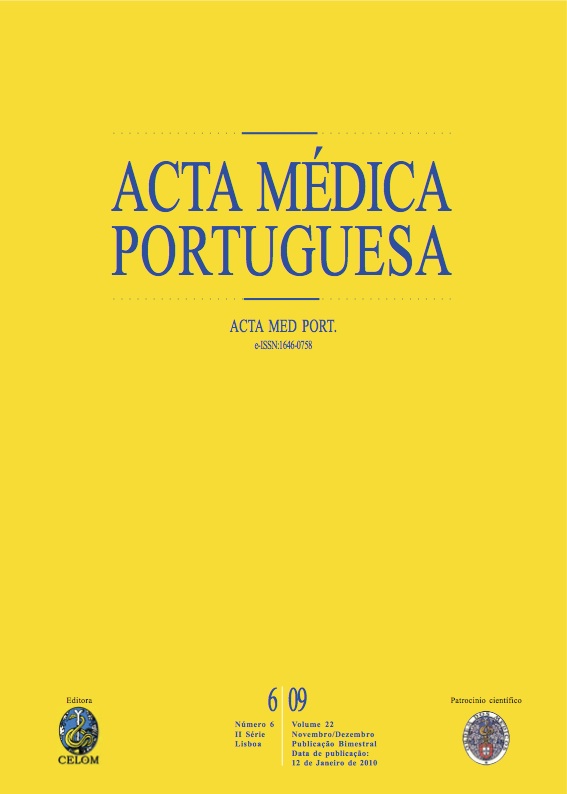O teste com Neuropad na detecção precoce da neuropatia periférica do doente diabético.
DOI:
https://doi.org/10.20344/amp.1740Resumo
One of the first signs of peripheral neuropathy is the loss of perspiration of the feet. Untill now, the Semmes-Weinstein monofilament test has been considered the gold test to detect early peripheral neuropathy. Recently, the Neuropad test has become available: it is a cobalt salt plaster designed to change colour from blue to pink in contact with liquids, namely sweating. The objective of this study was to find if the Neuropad test could be considered as a test for detecting peripheral autonomic neuropathy and to compare its sensitivity and specificity to the Semmes-Weinstein monofilament test. Forty diabetic patients were studied, 22 of them presented with peripheral neuropathy. The criteria used for the definition of neuropathy was based on the Neuropathy Disability Score (NDS). Under Semmes-Weinstein monofilament test, we found a sensitivity and specificity of 82% and 94%, respectively, and with the Neuropad test, a specificity of 44%, but a sensitivity of 100%. Ten patients presented a sudomotor dysfunction of the feet in the absence of peripheral neuropathy (based on the NDS criteria), and were considered as false positives. We concluded that the Neuropad test is a simple, sensitive test to screen for diabetic neuropathy. Based on the false positive results, we may consider it as a reliable test detecting neuropathy in a earlier phase.Downloads
Downloads
Como Citar
Edição
Secção
Licença
Todos os artigos publicados na AMP são de acesso aberto e cumprem os requisitos das agências de financiamento ou instituições académicas. Relativamente à utilização por terceiros a AMP rege-se pelos termos da licença Creative Commons ‘Atribuição – Uso Não-Comercial – (CC-BY-NC)’.
É da responsabilidade do autor obter permissão para reproduzir figuras, tabelas, etc., de outras publicações. Após a aceitação de um artigo, os autores serão convidados a preencher uma “Declaração de Responsabilidade Autoral e Partilha de Direitos de Autor “(http://www.actamedicaportuguesa.com/info/AMP-NormasPublicacao.pdf) e a “Declaração de Potenciais Conflitos de Interesse” (http://www.icmje.org/conflicts-of-interest) do ICMJE. Será enviado um e-mail ao autor correspondente, confirmando a receção do manuscrito.
Após a publicação, os autores ficam autorizados a disponibilizar os seus artigos em repositórios das suas instituições de origem, desde que mencionem sempre onde foram publicados e de acordo com a licença Creative Commons









